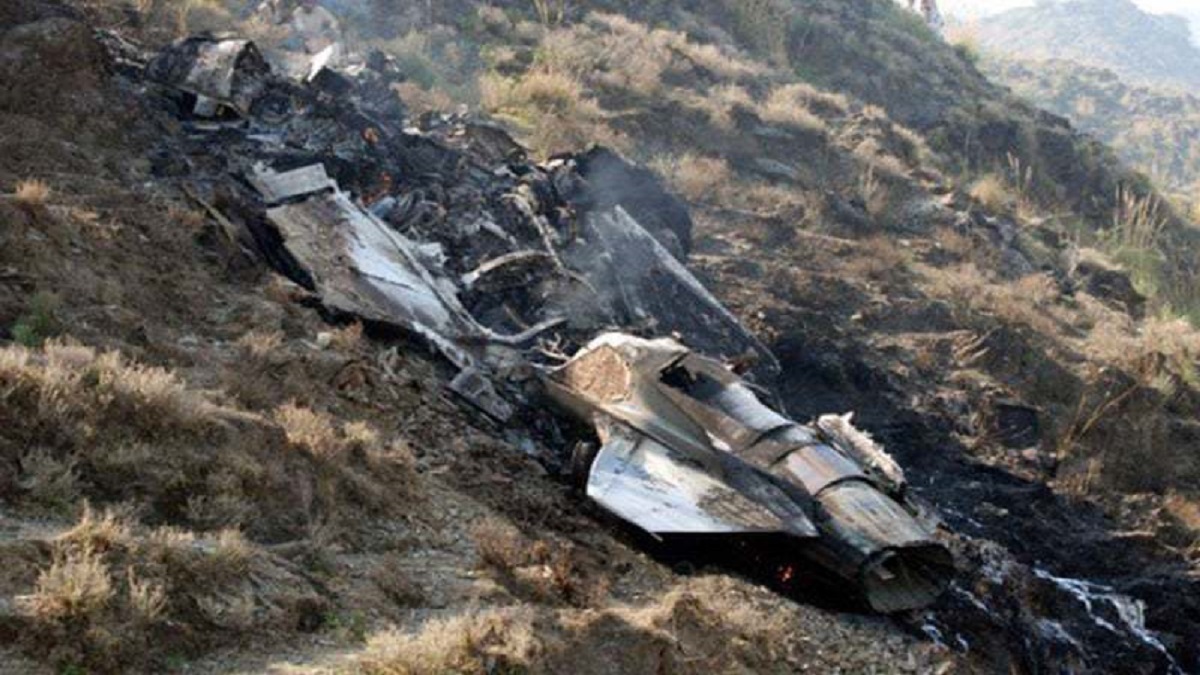


The world was witness to a Pakistan Air Force F-16 crash last month at Shakarparian, Islamabad. The aircraft was practising an aerobatic manoeuvre, in preparation for an upcoming aerobatic display performance. Although hindsight is always know-all, a keen or trained eye could probably foretell the inevitable, watching the height of the jet as it crested the loop. Tragically, a fourth generation frontline fighter jet, flown by an inexperienced or ill-trained pilot, is but just an expensive toy. The frequency of accidents and incidents, resulting in loss of expensive aircraft and pilots, perhaps points to a deeper malaise in a Pakistani military dominated by the Pakistan Army, especially in the oftneglected Pakistan Air Force (PAF) and Pakistan Navy (PN).
PAF’s history is replete with instances of their fighter aircraft meeting a fiery end at the hands of Indian fighter jets, be it F-86 Sabres shot down by IAF Gnats in the Eastern theatre in 1971 or the latest skirmish over the North Western sector in February 2019, when a PAF F-16 was shot down by an ebullient pilot in an IAF MiG-21. As has been always been the case after a dent in their (false) pride, the Pakistan military has gone to extraordinary lengths to peddle propaganda on social media, even resorting to movies and documentaries to propagate falsehoods.
PAF’s maladroit efforts to mislead their local audience and idolise their air warriors was on full display in their recent commercial movie venture, Sherdil, a testosterone fuelled, CGI-intensive potboiler—a flagrant attempt to placate their domestic audience. Inability to intercept IAF fighters during the Balakot strikes and the botched riposte the next day, leading to loss of an F-16, point to serious deficiencies in maintenance and training of PAF’s ageing fighter squadrons. This was substantiated by PAF’s hastily conducted “joint exercise”, post Balakot, with a foreign Air Force having Mirage 2000 and Rafale fighters in their inventory, reinforcing PAF’s poor state, primarily due to lack of budget, resources and most importantly, competence.
The antiquated variant of F-16 acquired by PAF in the 1980s may still be an effective aircraft, but crippling sanctions imposed by the United States have restricted flow of funds and spares, which has taken a toll on PAF F-16 fleet’s serviceability and fly-worthiness. The precarious financial situation of the Pakistani economy is also unlikely to improve given the propensity of the “establishment” to hobnob with proscribed global terrorists and their “welfare” organisations, while continuing a covert policy of meddling in the internal affairs of neighbours. For a country surviving on frequent “doles” and sell-out of national resources, it is a matter of time before a critical tipping point is reached and the world’s patience runs out, which would effectively ground the PAF. A misplaced sense of military swagger also extends to Pakistan’s maritime domain, where a handful of ships, submarines and aircraft attempt to secure the coastline from the formidable Indian Navy, which in the words of their CNS is (sic) “capable of sending the Pakistani Navy to the bottom of the Arabian Sea”. It follows that akin to their PAF brethren, the Pakistan Navy would also churn out propaganda documentaries extolling their (non-existent) virtues.
Pakistan Navy, effectively a brown water Navy with delusions of blue water eminence, also recently sponsored a grandiosely titled article by the Maritime Security Forum, Islamabad titled, “Responsivity Continuum: Emerging cornerstone of Pakistan Navy’s capability development, operation direction”. The Maritime Security Forum (MSF) is generally acknowledged as a mouthpiece for the Pakistan Navy to criticise the Pakistani Army and deep state for their “maritime and sea-blindness”. MSF’s academic work and writings indicate general lack of comprehension of maritime affairs; they seem to be primarily focused on bettering the stock of the Pakistani Navy within an unreceptive military establishment. The article is an ode to current Pakistan Naval Chief Abbasi and uses pretentious terms and gobbledygook in a failed attempt to obscure the gross mismatch between the Naval forces of India and Pakistan. While acknowledging the Pakistan Navy’s inability to garner resources from a gargantuan Pakistan Army, the article provides simplistic tactical feints as a means to contain the Indian Navy.
“Responsivity Continuum” is also a term which most Pakistani Naval personnel may fail to comprehend as a maritime strategy, given their limited number of assets and capabilities. For a cash-strapped Pakistani Navy, the word “continuum” is probably viewed as a homonym (same word with different meanings). One meaning of this word is the continuum of ostracization of the Navy within the Pakistani armed forces, by a dominant and overbearing Army. The other is the continuum of utilisation of meagre funds for foreign visits of current Chief Admiral Abbasi. At last count, Abbasi and his coterie had undertaken jaunts to over 30 counties, ranging from exotic Maldives to all-weather friend China. Disconnect with Pakistan’s ordinary citizens was exemplified by Abbasi’s recent trips to Brunei, Indonesia and Sri Lanka, even as the coronavirus was staring them in the face. Ashish Singh is Editor, Strategic Affairs, ITV Network.